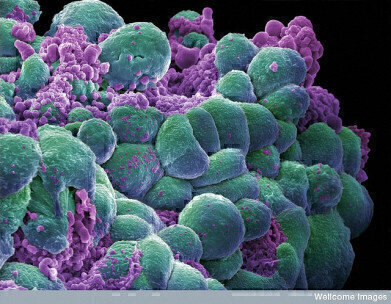News & Views
UK Scientists Use ‘Heat Seeking Grenades’ to Combat Cancer Cells
Nov 22 2015
The world is ardently anticipating the day when medical scientists announce that a cure for cancer is on the horizon. Understandably, there’s copious excitement when a new development hits the stage. This was exactly the scenario when researchers at the University of Manchester revealed the discovery of ‘heat seeking grenades’ that actively attack cancer cells. The nanomedicine breakthrough is the first of its kind to progress from concept to clinic, marking a huge step forward for one of the UK’s biggest educational institutions, and the field of nanomedicine as a whole.
Heat acts as ‘bull’s eye’ for cancer cell demise
So what exactly are these ‘heat seeking grenades’ and how do they work? According to the research team, the microscopic bubbles dynamically hunt down heat, eventually forcing tumour cells to explode. In the lab these miniscule fatty spheres are officially referred to as liposomes. First discovered in the 1960s, they’re essentially closed spherical membranes that medical scientists can fill with custom gene medicines and drugs. They’re then be guided to certain areas of the body in order to deliver concentrated doses of therapeutic molecules.
Overcoming obstacles
Unfortunately, targeting tumours doesn’t always go to plan. As well as cancerous cells, the liposomes are programmed to attack rapidly dividing cells found in the stomach, bowel and hair follicles. The UoM team has overcome this problem by developing liposomes that only release and attack cells sitting at temperatures of 42 degrees Celsius. This is around five degrees warmer than normal human body temperatures which ensures that therapeutic molecules aren’t accidently released in the wrong location.
“Once they reach a ‘hotspot’ of warmed-up cancer cells, the pin is effectively pulled and the drugs are released,” explains study author Kostas Kostarelos. “This allows us to more effectively transport drugs to tumours, and should reduce collateral damage to healthy cells.”
Previous attempts to use light, enzymes and specific pH levels as triggers for the release of chemotherapy-loaded liposomes have been largely unsuccessful, which makes the latest heat oriented technique an exciting new development for the global fight against cancer!
Want to find out more about scientific breakthroughs in the medical sphere? ‘A New Tool in the Clinical Management of Sepsis’ looks at how the UK Sepsis Trust development of the ‘sepsis six’ toolkit is helping doctors fight common and potentially life-threatening infection using high-dose, broad-spectrum intravenous antibiotics and antifungals.
Image via Flickr Creative Commons. Credits: crafty_dame
Digital Edition
Lab Asia 31.2 April 2024
April 2024
In This Edition Chromatography Articles - Approaches to troubleshooting an SPE method for the analysis of oligonucleotides (pt i) - High-precision liquid flow processes demand full fluidic c...
View all digital editions
Events
Apr 28 2024 Montreal, Quebec, Canada
May 05 2024 Seville, Spain
InformEx Zone at CPhl North America
May 07 2024 Pennsylvania, PA, USA
May 14 2024 Oklahoma City, OK, USA
May 15 2024 Birmingham, UK


















